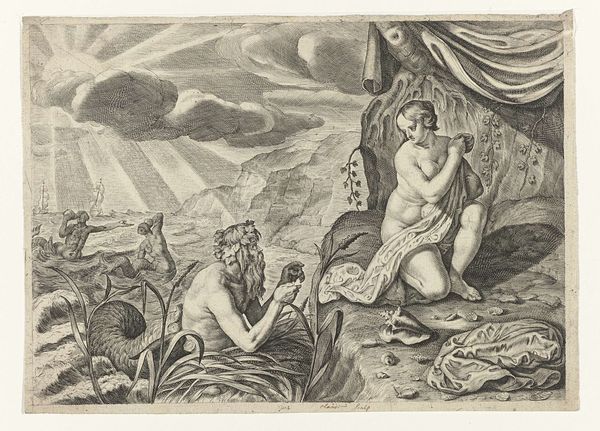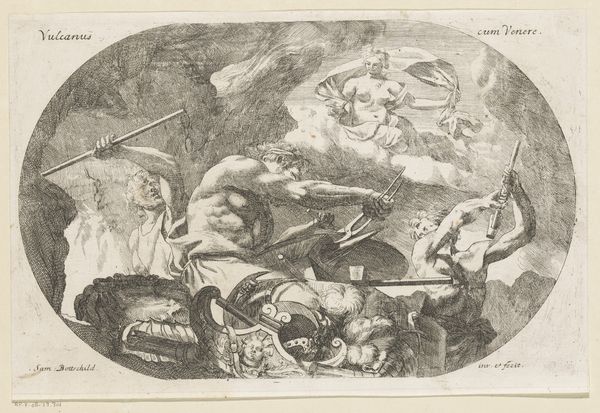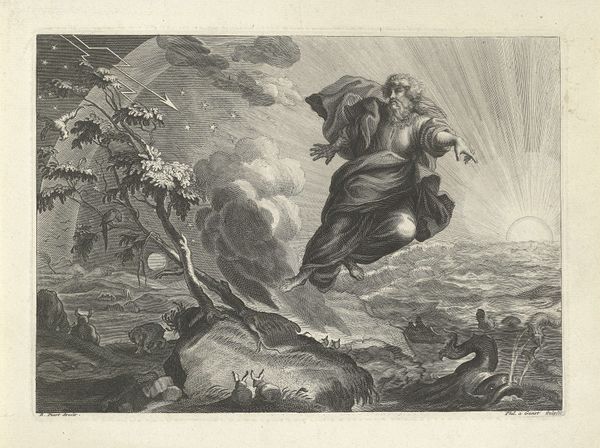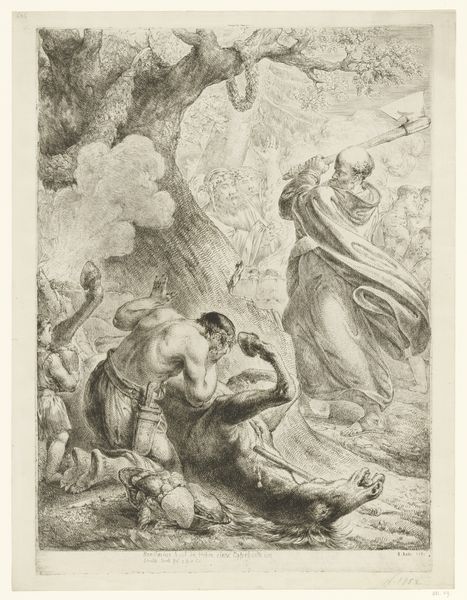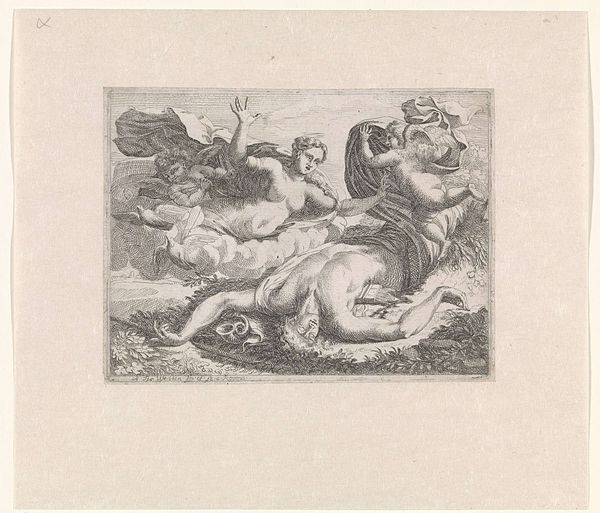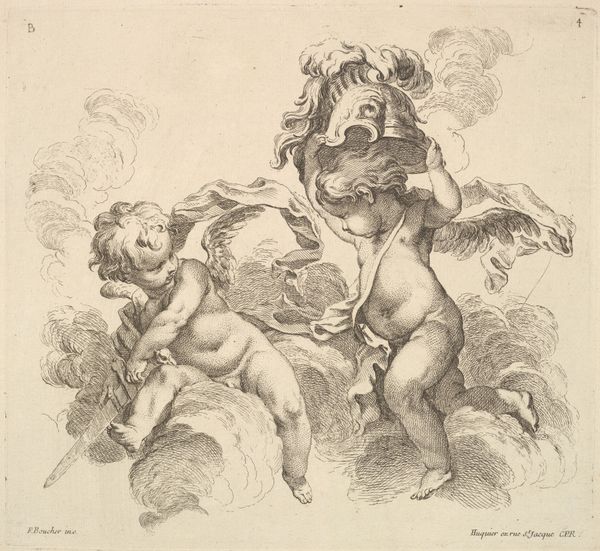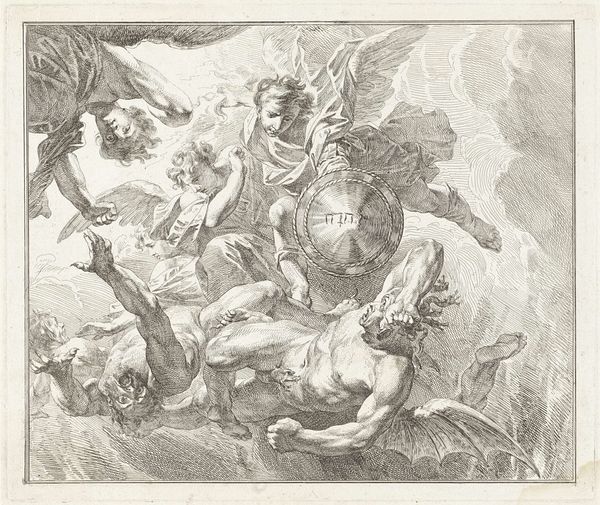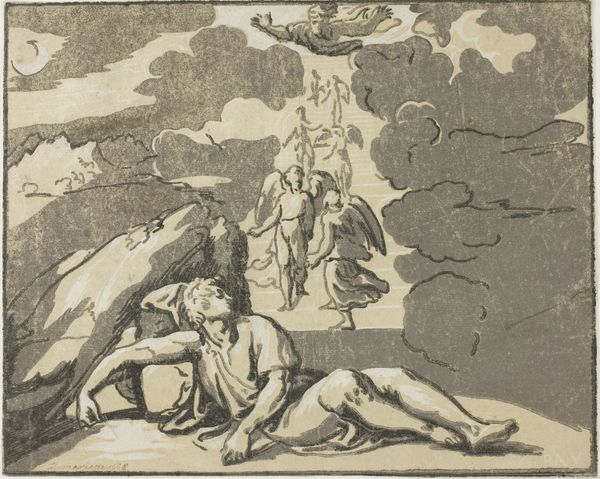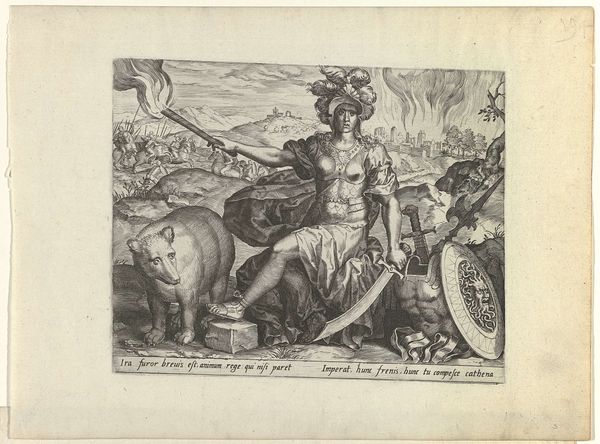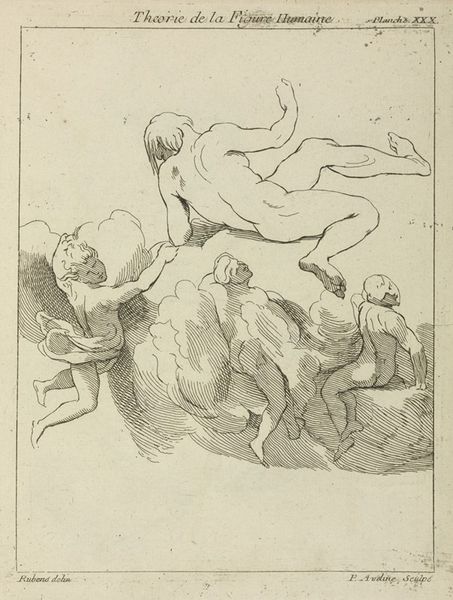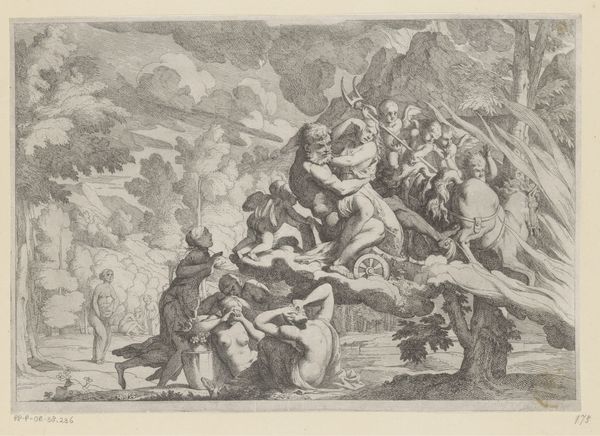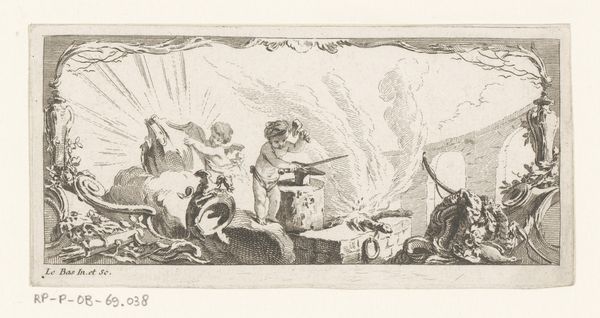
print, etching
#
allegory
# print
#
etching
#
landscape
#
figuration
#
history-painting
Dimensions: height 253 mm, width 396 mm
Copyright: Rijks Museum: Open Domain
Editor: This etching, "Allegorie op de voorspoed van een kardinaal" made in 1866 by Samuel Henri Mendes da Costa presents a classical allegorical scene, seemingly about prosperity. What strikes me most is the contrast between the bountiful still life and what appears to be a battle raging in the background. What do you see in this piece? Curator: From a materialist perspective, I immediately look at the relationship between the objects depicted and the labor involved in both their creation and the etching itself. Consider the cornucopia: who harvested those fruits? Whose labor does this prosperity actually represent, especially when juxtaposed with what looks like military conflict, potentially linked to resource extraction? The etching process also represents a form of labor. How might its mass production and distribution further amplify or distort the message of the allegory? Editor: That's interesting. I was focused on the symbolism of the objects themselves— the book for knowledge, the overflowing cornucopia for wealth, the cannons for power. But what you are saying is, we should consider the means of creating all of this depicted "prosperity", right? Curator: Exactly. Think about the consumption enabled by such an abundance. Where does this ‘voorspoed’—prosperity—end up? And what are the socio-economic conditions that allow for the making of this image, the exploitation it depicts? How does this etching participate in a larger cycle of production, representation, and consumption? Editor: So, by focusing on the materials represented and the material making of the artwork, we can unpack the potential inequalities inherent in this allegorical representation of prosperity. Curator: Precisely. Looking at art through a materialist lens makes us question not just what we see, but how it was made, by whom, and for whom. This approach unearths deeper social commentaries. Editor: This has really broadened my perspective. I'll definitely look at artworks through this lens from now on. Thanks!
Comments
No comments
Be the first to comment and join the conversation on the ultimate creative platform.
